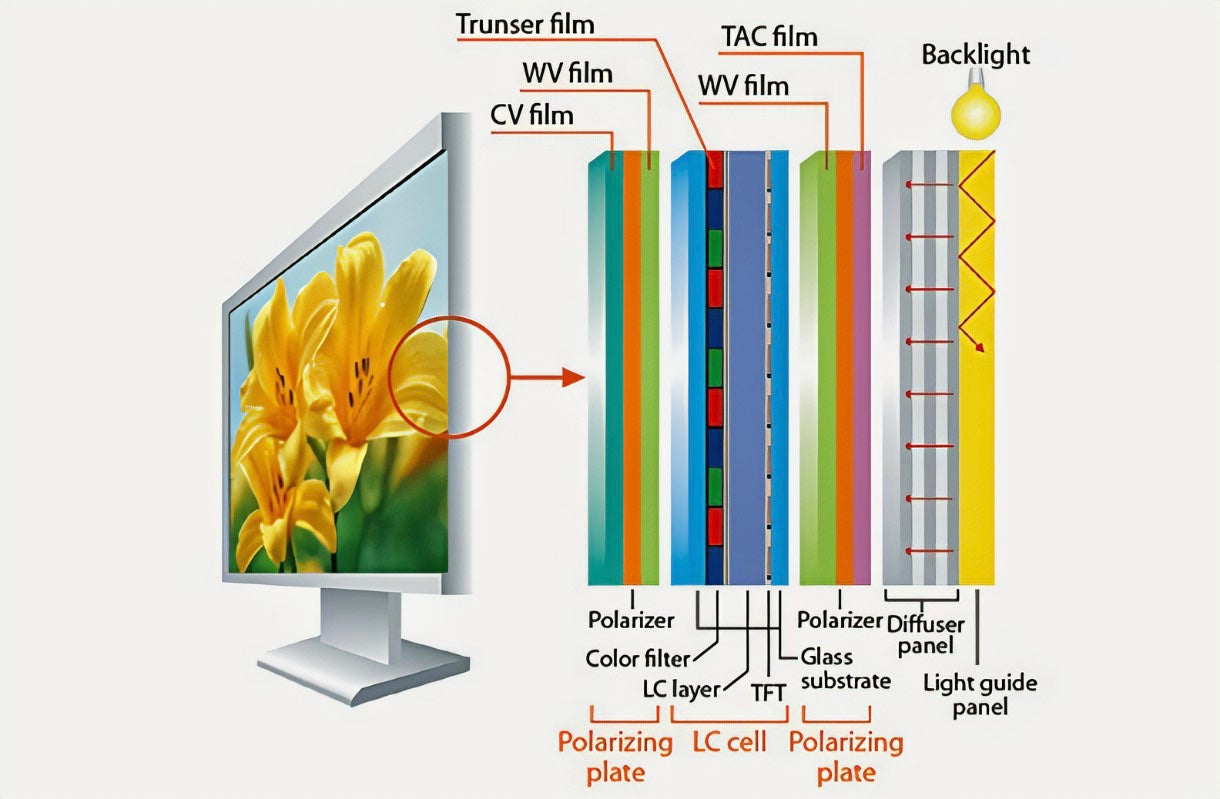
Ever wondered how the screen that you are using to read this content works in real life? Well, that’s what this article is about!
IPS technology is a type of LCD technology that is used to display content on digital screens. As with any type of LCD, IPS panels also make use of liquid crystal molecules to bring content to life.
As such, from its initial development back in 1990 to its modern-day fundamental principles, this article shares a quick overview of the IPS technology, covering all the details in a comprehensive manner.
Now, without further ado, let’s get started!
A quick note: IPS is not to be confused with Intrusion Prevention System. In the context of this article, IPS stands for "In-Panel Switching".
History Of the IPS Technology

IPS display is one of the most common types of LCD displays nowadays and can easily be spotted in the majority of everyday electronic devices, such as mobile phones and desktop computers.
However, it is important to note that the IPS displays we use today are not quite exactly like the ones that were originally created. IPS technology has a long-standing history of development and the display panels have continued to improve since day one.
The first ever IPS panel was created by a team of individuals, comprising Guenter Baur and his colleagues, at Fraunhofer Society in Germany back in 1990. The team then patented the concept of advantageous molecular arrangements of liquid crystals in IPS panels to Merck KGaA, a German chemical and pharmaceutical company.
This endeavor, as such, marked the official beginning of the IPS technology we know today. However, things were only getting started.
Since the original design was not optimized for widespread usage, the Japanese electronics company, Hitachi, soon took it upon itself and filed patents to optimize the shape of electrodes, the interconnection of the thin-film transistors, as well as the elimination of stray fields in IPS panels.
While Hitachi introduced the first-ever commercial IPS display panel in 1996, it was not until 2007 that LG and Samsung Electronics developed their own versions of the IPS technology and went on to dominate the display industry.
What Is an IPS Panel and How It Works?

A display panel that functions on the principles of IPS technology is called an IPS Panel. IPS Panels are a niche branch of the much wider domain: LCD panels.
For those unaware, LCD panels are generally classified into 2 types of categories: Passive Matrix and Active Matrix LCDs. Each of these categories has further sub-categories of display panels.
For instance, as far as the IPS panels are concerned, they belong to the active-matrix type of LCDs. In that, these panels use a thin film transistor (TFT) to switch each pixel on and off individually.
As for the passive-matrix LCD display, they use a grid of electrodes to apply voltage to the liquid crystals, which then twist and change their polarization.
How IPS Panel Work?
An IPS display consists of several layers and each layer has its own distinct function to perform. Below is a general overview of all the fundamental principles involved in the functioning of IPS technology:
To begin with, a backlight layer emits white light that passes through the first polarizer. A polarizer is a thin film that filters the light according to its polarization state. The polarization state is the direction of the electric field of the light wave. The polarizer only allows the light with a certain polarization state to pass through and blocks the rest.
Now, the polarized light from the first polarizer enters the liquid crystal layer. The liquid crystal layer consists of millions of tiny molecules that can change their orientation and alignment when an electric voltage is applied to them. Depending on how they are aligned, they can either block or allow light to pass through.
Since the liquid crystals are always aligned the same way and are parallel to the glass surfaces, they reorient themselves to produce an image when they receive an electrical signal. These electrical signals, or “electrical pulses” if you want to call it that way, can shift them 90 degrees, essentially “switching” them between active and resting states.
As such, the reoriented liquid crystals change the polarization state of the light passing through them. This is because the liquid crystals act as tiny prisms that can rotate the electric field of the light wave by a certain angle. The angle depends on the voltage applied to the liquid crystals and the initial alignment of the molecules.
Afterward, the polarized light from the liquid crystal layer passes through the second polarizer. The second polarizer is also a thin film that filters the light according to its polarization state and is usually crossed at 90 degrees with the first polarizer. In other words, it only allows the light with a perpendicular polarization state to pass through, and blocks the rest.
Lastly, the polarized light from the second polarizer enters the color filter layer. The color filter layer consists of red, green, and blue subpixels that filter the light coming from the backlight layer. The color filter layer is aligned with the liquid crystal layer so that each subpixel corresponds to a pixel on the screen. The color filter layer produces the desired color by combining different amounts of red, green, and blue light.
To put it in perspective, if the subpixel receives full red light, no green light, and no blue light, it will produce a red color. If it receives half red light, half green light, and no blue light, it will produce a yellow color. If it receives no red light, no green light, and full blue light, it will produce a blue color.
Finally, the color filter layer creates the image that is displayed on the screen.
How Does IPS Display Compare to Other Monitor Types?

IPS Panels are best known for their wide viewing angles and better color reproduction. However, at the same time, they suffer from drawbacks, such as slow response time and higher power consumption than other types of LCDs.
So, let’s compare IPS Displays to other monitor types and see how they fare with the competition.
Coming up first is Twisted Nematic, or simply TN for short.
These are the oldest and most common types of LCDs and belong to the Passive Matrix type of LCDs.
While TN panels are best known for their fast response times and low power consumption, making them ideal for gaming, it comes at the expense of low color accuracy and low contrast ratio. The narrow viewing angles further make the matter worse for TN displays. In comparison, IPS panels support wider viewing angles, and that, too, without any color distortion. IPS panels also have better contrast ratios than TN panels.
The next major type of LCD is VA, short for Vertical Alignment.
VA LCDs came a couple of years later after the IPS technology. Unlike Twisted Nematic, VA panels are an example of Active Matrix LCD.
While this type of LCD provides good color reproduction, they do not exactly match the accuracy of IPS panels. Likewise, VA Panels also support wider viewing angles but not as much as IPS panels and their response time is also slow. However, on the flip side, VA panels have higher native contrast ratios when compared to IPS. Consequently, this results in deeper blacks and better performance in dark environments.
To Wrap It Up
IPS panels are a type of LCD that function on the principles of IPS technology. While IPS displays have their strengths, they also lack in certain aspects when compared with other major types of LCDs, such as TN and VA.
However, IPS panels have improved a lot since day one. Therefore, it’s safe to say we will see even better IPS displays in the near future. What do you think? Share your thoughts with us and let us know in the comments below!
Read more

In the ever-evolving world of technology, Augmented Reality (AR) is taking the center stage. This fascinating technology blends the virtual and real worlds, providing an enhanced and interactive ex...

A polarizer (also known as a polarizing film) is an optical film material that transforms natural light into polarized light. Since LCDs (liquid crystal displays) rely on the controllable adjustme...



Leave a comment
This site is protected by hCaptcha and the hCaptcha Privacy Policy and Terms of Service apply.